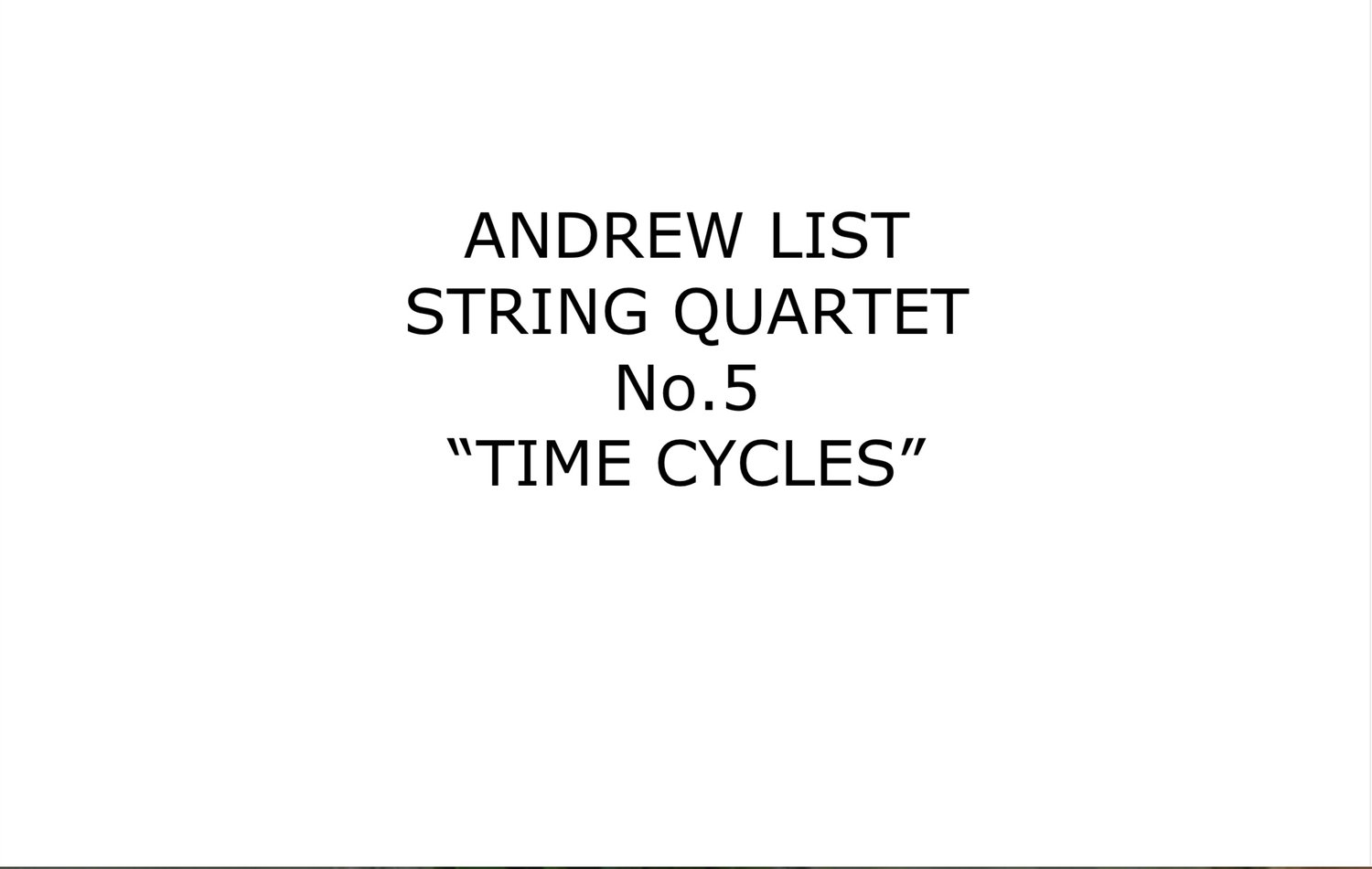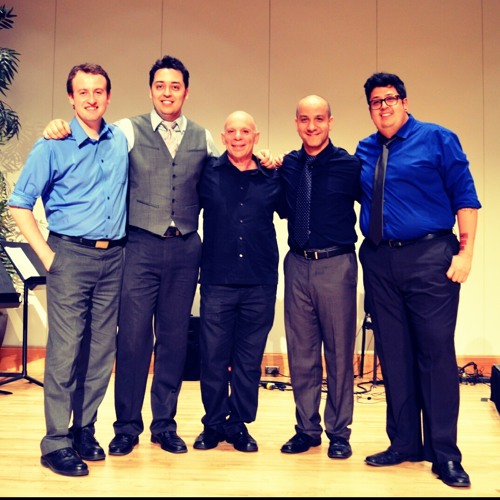String Quartet no. 5 "Time Cycles" Score and Parts
On Sale
$35.00
$35.00
String Quartet No. 5 "Time Cycles" is inspired by T. S. Eliot's Four Quartets and also Circular Time Theory. The work consists of five movements each of which inspired by a quotation from Burnt Norton the first of the Eliot’s Four Quartets.
In his diary T. S. Eliot wrote “what would it be like if you had four different poetic strains that eventually come together as one. “ He was listening to the late Beethoven Quartets when he wrote that and was inspired by that great music when writing the Four Quartets.
My entire piece is based on the same musical material through out. The first four movements are variations that explore this musical material in different ways. In Burnt Norton Eliot writes: "Time present and time past are both perhaps present in time future, and time future contained in time past" The fifth movement is a recapitulation of the earlier four and is also the point where all of the musical material comes together. In my piece time present, past and future are all happening simultaneously.
My piece is also inspired by Circular Time Theory where all time and events are occurring at once as opposed to linear time theory when events unfold in a sequence, All five movements of my quartet use the same intervallic and pitch material through out thus everything is occurring at the same time presented in five different guises.
Quotations for each movement:
1) The stillness, as a Chinese jar still moves perpetually in its stillness, not the stillness of the violin, while the note lasts, not that only but the co-existence or say that the end precedes the beginning, and the end and the beginning were always there and all is always there before the beginning and after the end.
2) At the still point of the turning world, neither flesh nor fleshless; Neither from nor towards; at the still point, there the dance is.
3) Time past and time future allow but a little consciousness. To be conscious is not to be in time but only in time can the moment in the rose-garden,
the moment in the arbour where the rain beat, the moment in the draughty church at smokefall be remembered; involved with time past and future.
4) And all is always now. Words strain, crack and sometimes break, under the burden under the tension, slip, slide, perish. Decay with imprecision, will not stay in place.
5) Time present and time past are both perhaps present in time future, and time future contained in time past. If all time is eternally present, all time is unredeemable.
In his diary T. S. Eliot wrote “what would it be like if you had four different poetic strains that eventually come together as one. “ He was listening to the late Beethoven Quartets when he wrote that and was inspired by that great music when writing the Four Quartets.
My entire piece is based on the same musical material through out. The first four movements are variations that explore this musical material in different ways. In Burnt Norton Eliot writes: "Time present and time past are both perhaps present in time future, and time future contained in time past" The fifth movement is a recapitulation of the earlier four and is also the point where all of the musical material comes together. In my piece time present, past and future are all happening simultaneously.
My piece is also inspired by Circular Time Theory where all time and events are occurring at once as opposed to linear time theory when events unfold in a sequence, All five movements of my quartet use the same intervallic and pitch material through out thus everything is occurring at the same time presented in five different guises.
Quotations for each movement:
1) The stillness, as a Chinese jar still moves perpetually in its stillness, not the stillness of the violin, while the note lasts, not that only but the co-existence or say that the end precedes the beginning, and the end and the beginning were always there and all is always there before the beginning and after the end.
2) At the still point of the turning world, neither flesh nor fleshless; Neither from nor towards; at the still point, there the dance is.
3) Time past and time future allow but a little consciousness. To be conscious is not to be in time but only in time can the moment in the rose-garden,
the moment in the arbour where the rain beat, the moment in the draughty church at smokefall be remembered; involved with time past and future.
4) And all is always now. Words strain, crack and sometimes break, under the burden under the tension, slip, slide, perish. Decay with imprecision, will not stay in place.
5) Time present and time past are both perhaps present in time future, and time future contained in time past. If all time is eternally present, all time is unredeemable.



